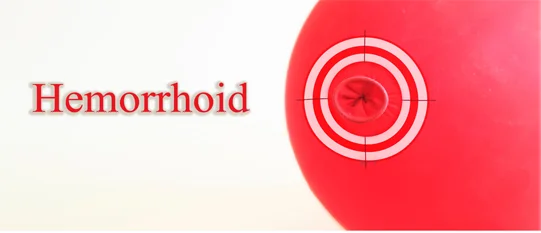Hemorrhoids, also called piles, fistula, and fissure, have been known for a long time because they cause pain, burning, and bleeding from the rectum, which causes a lot of stress and anxiety. These problems have been around for a long time, ever since people started to walk on two legs. So it’s not surprising that they are talked about in books like the Charaka and Sushrutha Samhita, which were written around 1500 BC.
Hemorrhoids are really just swollen veins near the anal canal. In Ayurveda, it is called “Arshas” and is described as a very painful disease that causes small, fleshy bumps to grow and blood to leak from the guda or anal canal.
What are the various kinds of Piles?
Hemorrhoids are called internal or external based on whether they are inside or outside of the anal opening. In Ayurveda, the classification is based on the flow of blood and is hence considered to be of sravi (bleeding) and shushka (non-bleeding) types.
Why do people get hemorrhoids?
Hemorrhoids can be caused by many different things. These might be:
- Hereditary means that it is passed down from parents to children.
- Diet: This is one of the main reasons why people get haemorrhoids and other painful diseases in the anal area, such as fissures and fistulas.
- Predominantly non-vegetarian diet: Stools tend to get hard because there aren’t enough fibrous foods, raw fruits and vegetables, and water in the diet. This puts pressure on the blood-carrying veins in the anal region, which causes them to get bigger.
- Straining (forcing) stools for a long time because you feel like you didn’t get everything out of your bowels causes the veins to get bigger and bleed.

How do you know if you have ?
There are some of the following:
- One of the worst and most important things about this disease is that it causes bright red blood to leak out of the body without pain.
- One or more lumps at the anal opening that can be felt when you wash your hands after going to the bathroom.
- The feeling that a fleshy mass is coming out of your stools. This mass goes back in on its own after you’re done.
- Pain, burning, and the release of mucus sometimes.
How can you tell if you have this disease?
It is very important to have a skilled Ayurvedic surgeon look at the anal area by hand or with a proctoscope, because not all conditions that cause bleeding when you poop are caused by piles.
What can happen if we neglect Piles?
If you don’t get help right away, it could lead to a lot of problems. These things are:
- Profuse bleeding
- Small amounts of bleeding over a long period of time can lead to anaemia, which can make you tired and unable to work.
- The blood inside the pile can clot, which can cause a very painful swelling near the anus. (External hemorrhoid with thrombosis)
- When the enlarged pile (the dilated vein) pushes out of the anal canal, it can cause pain, sores, and sometimes gangrene of the mass. This happens when the pile prolapses out of the anal canal (which can be life threatening)
- Infection and abscess
Depending on the symptoms, haemorrhoids are classified as follows:
- Grade I: The haemorrhoids do not prolapse, only bleeding from the rectum is there.
- Grade II: The haemorrhoids prolapse upon defecation, but spontaneously reduce.
- Grade III: The haemorrhoids prolapse upon defecation, but reduce after manipulation.
- Grade IV: The haemorrhoids are prolapsed and remain prolapsed.
What kinds of Piles treatments are there to cure it?
Conservative treatment includes using laxatives, eating foods high in fibre, working out every day, and not straining when passing stools, among other things. Sclerotherapy, Cryosurgery, Banding, and Hemorrhoidectomy are some other cures that can be used.
Even though these treatments work in different ways, they all have problems like recurrence, pain, severe bleeding, post-operative anal narrowing (stricture formation), or even anal incontinence (inability to control passage of gas, liquid stools or sometimes even hard stools)
What is Ayurvedic Treatment for Piles?
Ayurvedic treatment for Piles aim to address the root causes of piles and provide relief from symptoms. As part of the Arsha treatment, Ayurvedic therapies like Abhyanga, steam, Avagahana (a medicated sitz bath), Lepana (an application), Panchakarmas (like Virechana and basti), and so on are used.
Early stages are easy to treat with herbal medicines and change in your diet. But if a patient is in grade 2 or higher, he or she may have to go through Kshara sutra treatment.
Ayurveda medicines for Piles
Some of the Ayurveda medicine for piles helps stop bleeding, kills bacteria, and makes you go to the bathroom. It helps get rid of the bacteria that can cause a hemorrhoid. It can stop bleeding & helps to clear the bowels. Ayurvedic medicines for piles like Chirabilwadi Kashaya, Kulattadi Kashaya, Abhayrista, Drakshasava, Avipattikara choorna, Triphala guggulu, Arshogni vati, kankayana vati, Laxifit powder, etc. can be taken after consulting with and being checked by an Ayurveda doctor.

Ayurveda Ksharasutra Treatment for Piles
For Piles, fistula & fissure The Shathayu Ayurveda clinic offers a very good, non-surgical treatment called “kshara lepa” (alkaline applications) or “kshara sutra” (alkaline Ligation) for its cure, with few recurrences.
Ayurvedic medicine called Kshara is mostly made of the alkaline parts of a plant. Kshara has many uses, but clinical tests and scientific research have shown that it works well to treat hemorrhoids, fissures, fistulas in the ovaries, and pilonidal sinus. An Ayurvedic surgeon will put kshara paste on hemorrhoid or tie the kshara sutra to the base of the hemorrhoid. This stops the bleeding, stops the blood from flowing through the veins, and thins the blood. It also kills the tissue in the veins that are bleeding, so the pile mass goes away slowly and doesn’t come back as often.
The best thing about this Ayurvedic Treatment for Piles is that you don’t have to stay in the hospital for as long, so you can spend more time at work. Also, it hurts less and comes back less often. So, this way of treating hemorrhoids, called kshara sutra or kshara karma, has been slowly gaining popularity, even in the West, and is now the most common way to treat hemorrhoids.

Home remedies for Piles
- Don’t sit and get stained for too long.
- Get moving and do yoga! It’s important if you have piles.
- If you eat more fibre, you can avoid constipation.
- Increase Bulk/ fibre in food, try bananas, milk, grapes, or radish Which mildly work as laxatives
- If you have a lot of trouble going to the bathroom, take 1 teaspoon of Triphala before bed.
- Take more buttermilk and warm water
- Add horse gram to your diet
- Cucumbers, radishes, and greens in a raw salad are good.
- Take a sitz bath with warm water or ayurveda decoctions like Triphala or dashamoola
- Eat papaya, apple, grapes, figs, and bananas as part of your diet.

